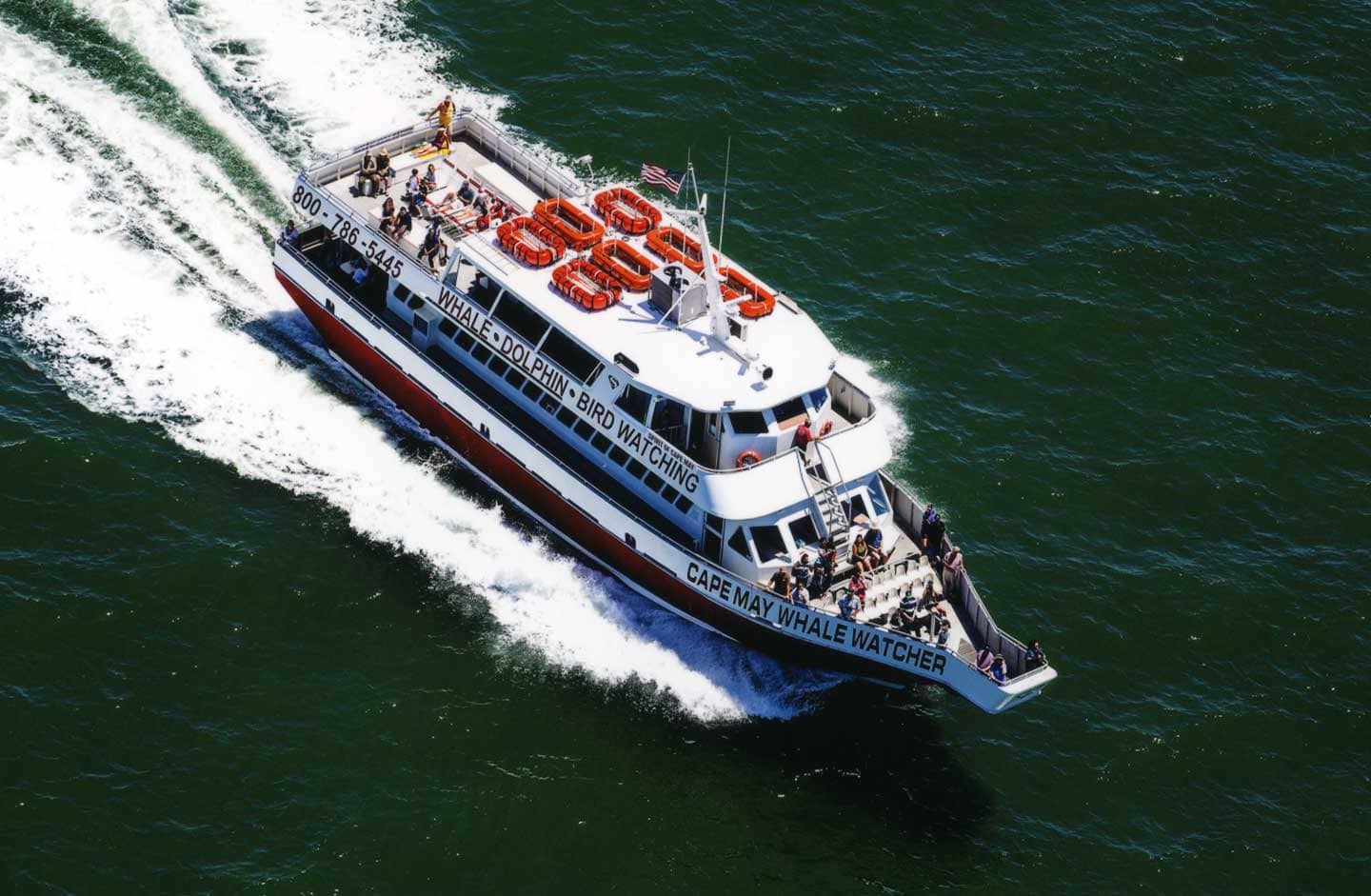2024 Recap
What a YEAR!
2024 was strange. We had a mild winter 2023-2024. The waters were not particularly cold at the start of 2024. As the year progressed we had cooler water than normal. How cool? In Cape May, New Jersey, our summer water temps normally reach into the 70s F. However. In 2024, along the beaches, we had water temperatures in the 58-60 degree mark, as of Mid-August. This kind of extreme cold in the middle of summer had not been experienced since the late 1980s. The culprit- a repeating weather pattern of South East Wind, on shore breezes which caused upwelling. It turns out there was also cold water coming down from the Gulf of Maine into area South of Cape Cod, and some of it crept as far South as Cape May, New Jersey. The result? Weird, but good sightings!
We had some new sightings occur off of Cape May, NJ. Sightings I never thought we would ever experiene, and that is with whale watching in the area since 1990. How strange could it be Captain Jeff? How about Basking sharks? Yup! We saw two in 2024 around McCries Shoal and near Prissywicks and those reports were backed up by other boats seeing them. Basking sharks are the second to largest shark in the world. The only shark larger than a Basking shark is a Whale shark. The Basking shark can weigh over 4 tons! The Basking shark can measure up to 28 feet in length. Cetorhinus maximus is not commonly found near shore off of Cape May, NJ, however 2024 proved, never say never.
The Basking shark was not the only oddity of 2024. Large number of Great White sharks were encountered too. Our sightings included one small Great White which was entangled. This poor animal showed signs of entanglement for a long period. It appeared to be several lines (ropes) and a piece of net. Unfortunately, our whale watching boats are not equipped to deal with such a difficult situation. Our freeboard, height off the water is about 8 feet, and the shark was sighted swimming at the surface to 5 feet under the surface. Specialized grapples with cutting edges are needed and training to use them. We are looking into the possibility of training for this situation, because entanglement is a real issue for many species, including Humpback, Fin, Minke, and North Atlantic Right whales.
Speaking of whales, we saw many. We had Humpback whales in large numbers in Spring and Fall 2024. That is a fairly common occurence for us. We hae been whale watching since 1990, and this is a consistent pattern every couple years, though we have also encountered strong summer months of Humpback whale sightings. We had as many as twelve whales in a single trip, and we sighted many regulars to the area, including Mojo. Mojo may have been the most photogenic of the bunch in 2024, with many breahces, fluke slaps, kick feeding, pectoral slaps, and lunge feeding.
Humpback whales gave way to Fin whales. We had a large group of Fin whales offshore of Cape May, NJ. However, as a challenge of the norm, we also had a Fin whale at Cape May Inlet for two trips this past season. another oddity. What is more strange, the Fin whale was feeding! We often see Humpback whales inshore feeding, normally on Menhaden (Bunker) but normally we only encounter Fin whales feeding 5-20 nautical miles offshore! This whale, which we believe it to be the same whale was sighted feeding inshore both times! The Fin whale, Balaenoptera physalus, normally feeds on small schooling fish, squid and crustaceans including copepods and krill. In the North Atlantic, they prey on euphausiids in the genera Meganyctiphanes, Thysanoessa and Nyctiphanes and small schooling fish (e.g. the genera Clupea, Mallotus, and Ammodytes). In other words, Menhaden normally would not be part of their diet, and we did not encounter Menhaden in the area. What we did have were Sand Eels.
Sand eels, or sand lance or sandlance is a ray-finned fish belonging to the family Ammodytidae. Several species of sand lances are commonly known as "sand eels", though they are not related to true eels. These small fish also feed on copepods. This is a species which many species feed on includng, Humpback whales, Fin whales, North Atlantic Right whales, Minke whales, many species of birds, and many species of fish, everything from Summer flounder, to Bluefin Tuna, which we also saw! YES, Bluefin Tuna, crashing through Sand Eels, a mile offshore of Wildwood Crest, New Jersey. It was spectacular.
We also encountered our first North Atlantic Right whales in a long time! The whale we positively ID was off of Stone Harbor, New Jersey, about four miles from shore. We followed protocol and reported the sighting. We took photographs for ID. We kept our distance too. It is illegal to approach with 500 yards of the North Atlantic Right whale. North Atlantic Right whales are a critically endangered species. The current esitmates have them at 360 left in the wild. Finding a North Atlantic Right whale is similar to the idea of looking for a unicorn, seemingly, but 2024 produced a couple off of New Jersey.
Now, with a cold winter 2024-2025, I wonder what else will come to the waters off of Cape May, NJ? We are ready to find out. Our season starts March 14, 2025 at 1:00 PM and we look forward to seeing you aboard!
Captain Jeff R. Stewart





